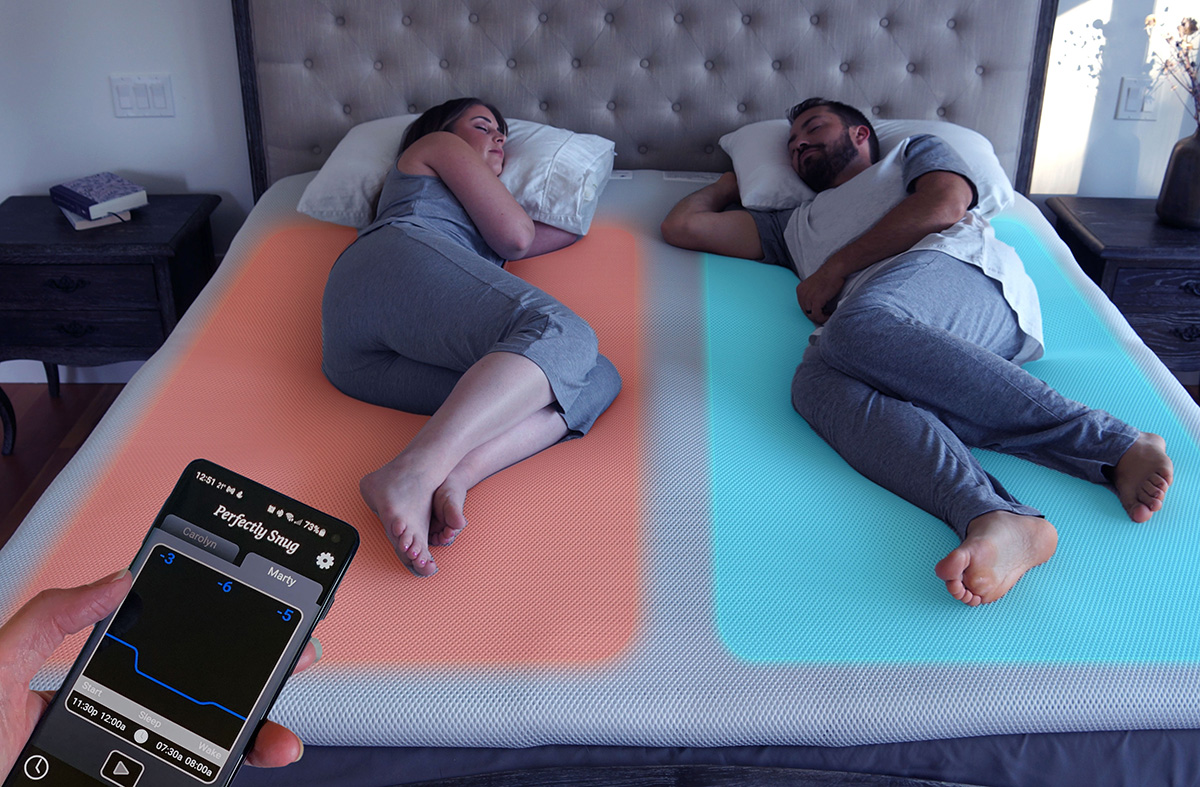Perfectly Snug Temperature Regulating Topper Improves Perceived Deep Sleep and REM Sleep by More Than 75%
Dan Gartenberg PhD, August 2025
Abstract: A sleep study was conducted to examine whether the Perfectly Snug temperature regulating topper can improve sleep quality and next day alertness. We partnered with Perfectly Snug, a company that developed an innovative air-based solution that can adjust temperatures dynamically on either side of the bed. The topper can integrate with any bed by fitting snugly under the sheet and on top of the mattress. We recruited 58 participants, 22 of which completed all four surveys over the three week study. Participants who completed the study received a $200 amazon gift card. Sleep was measured using validated surveys at onboarding, a week after using the topper, then at the second and third week, where participants were randomized to either use the topper or not use the topper. 100% of participants reported improved sleep with the topper, 85% reported falling asleep faster and 80% reported improved sleep quality. Participants reported being more sleepy during the day on the Epworth Sleepiness Scale (ESS) when they did not use the topper (M = 7.4, SD = 5.37) using the topper (M = 4.6, SD = 3.8), t(22) = -2.07, p = .05). A two point change on the ESS is clinically significant. Additionally, participants reported perceived improvements in dreams and deep sleep. These findings support the hypothesis that dynamically changing temperature during sleep using air-based solutions can improve sleep quality and next day alertness.
Introduction
Reducing core body temperature can help people fall asleep1-4 and not the optimal temperature, regenerative sleep stages are hindered, including Rapid Eye Movement (REM) sleep and deep sleep.4-7 The reasons for this is that circadian rhythms are impacted by temperature, when we fall asleep, core body temperature drops, and when we are in REM sleep, temperature regulation is hindered, making it especially important to be at just the right temperature. Temperature adjusting toppers have the potential to promote falling asleep, staying asleep, and getting more regenerative deep sleep and REM sleep by personalizing temperature needs of each sleeper, given a sleep partner, and by adjusting to keep the body at its ideal temperature throughout the night.
Study Design
The Perfectly Snug air-based topper (see Figure 1) can quickly adjust temperature needs, has a built in sensor for dynamically increasing in air-speed to meet the body’s needs. Users can adjust what temperature their side will be throughout the night, such as increasing the temperature upon awakening to reduce morning brain fog. It can also be used to address sleep issues like hot flashes or night sweats with a button that initiates a quick burst of cooling air. This feature can also be used to help users fall asleep faster by dynamically reducing internal body temperature. In a large study published by Sleeptracker-AI on 1.75 million nights of sleep, sleeping at a cooler temperature (see Figure 2). A system that can adjust temperature dynamically can further improve sleep quality.
We investigated how the Perfectly Snug topper can positively improve sleep quality and next day alertness. We hypothesized that participants would report getting more regenerative sleep and feeling more energized the next day when using the Perfectly Snug topper compared to when they slept on the topper but turned it off.
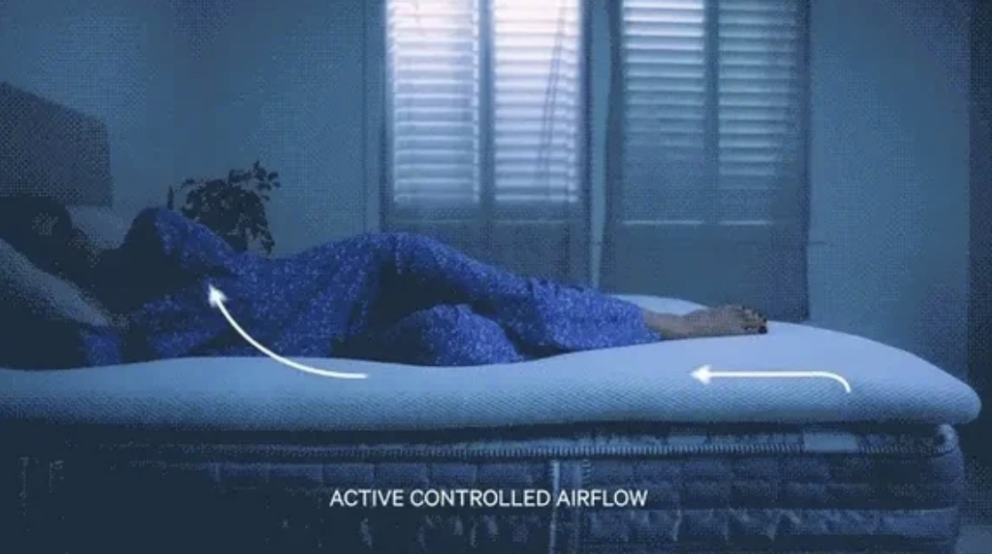
Figure 1. The Perfectly Snug topper fits on any mattress and can direct cooling air on either side of the bed to create personalized temperature environments.
We recruited participants for the study via an email campaign targeted at SleepSpace users. Participants qualified based on if they owned an iPhone or Android phone and did not travel for the 3-week period that they were using the topper. 58 participants completed the onboarding survey and were consented. To be included in the analysis, participants had to complete a survey battery at baseline, one week after baseline, and two weeks after baseline. On weeks two and three, participants were randomly assigned to either turn the Perfectly Snug topper on for the week or off for the week. Participants were either existing users or recent users who purchased the topper. Participants were given free access to the SleepSpace technology throughout the study and were asked to monitor their sleep daily using the Consensus Sleep Diary and the sleep tracking features found within the software, in order to be more accurate in evaluating their sleep quality.8 Participants were instructed to use the Perfectly Snug topper however they felt would best improve their sleep quality and to track their sleep daily with SleepSpace (see Figure 3).
22 participants (mean age = 45.7, standard deviation = 11.4, and 12 females) completed the 3-week study, based on a participation criteria of completing survey assessments of sleep and alertness at four separate time points across the study (see Figure 4). At each of the time-points participants completed a 5-10 minute questionnaire on their perceptions of the supplement. The survey also included validated assessments of perceived sleep quality (PROMIS) and next day energy levels (Epworth).
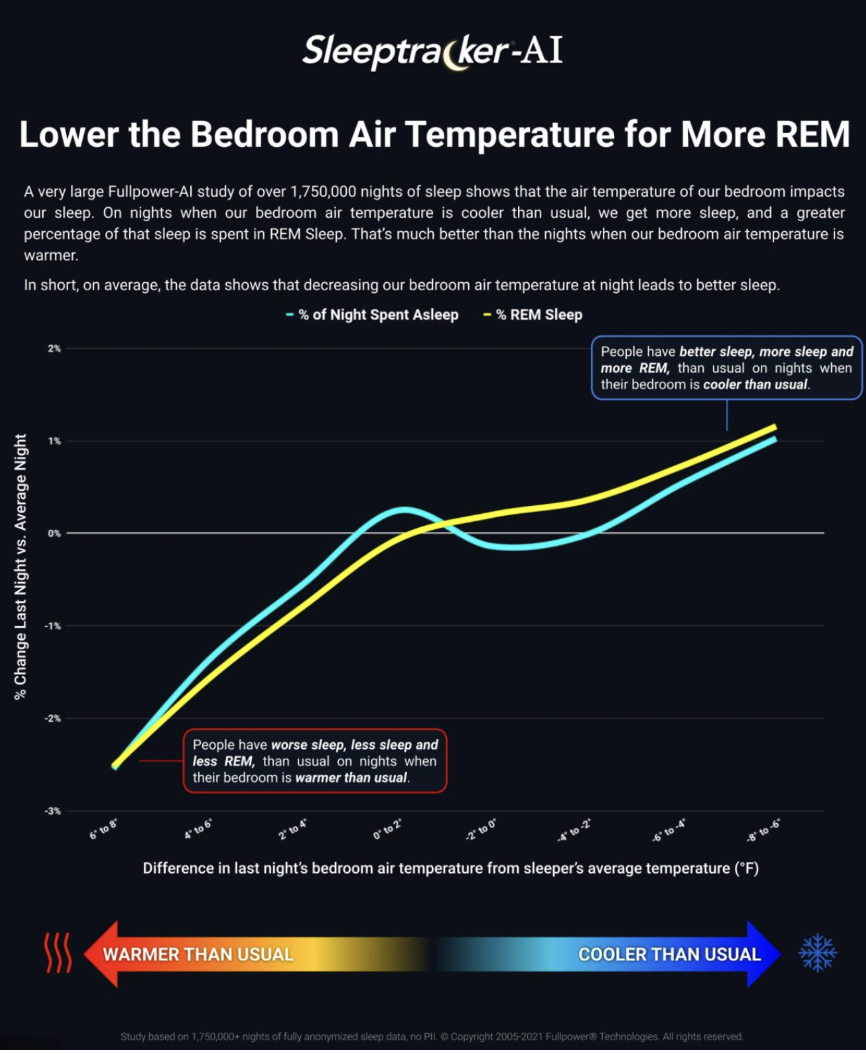
Figure 2. Large sample of 1.75 million nights of sleep data shows that the cooler the temperature the greater the sleep amount and the regenerative REM sleep.
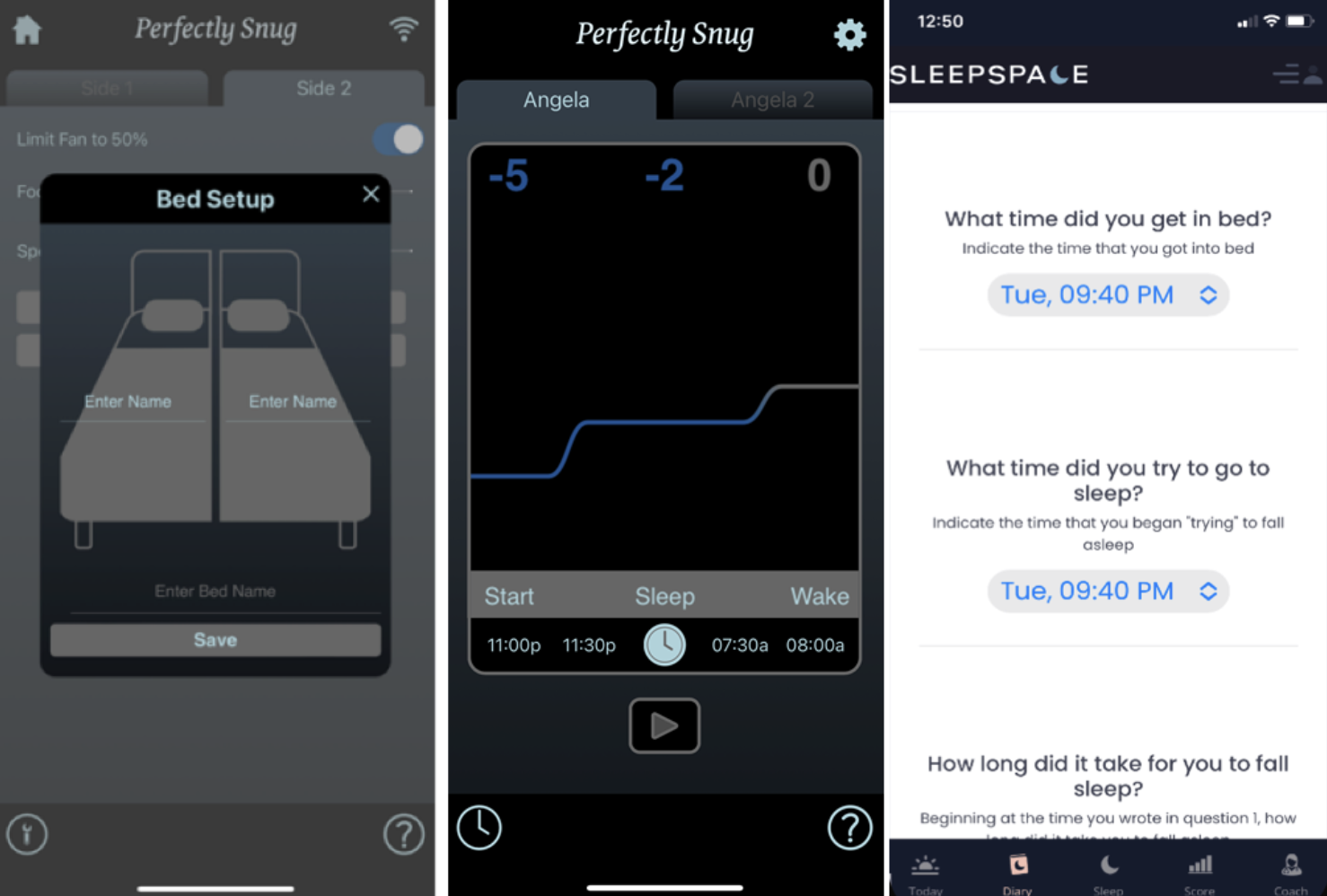
Figure 3. (left) Setting up the Perfectly Snug topper such that either side of the mattress has a different temperature, (center) Adjusting the temperature settings of the Perfectly Snug topper such that it starts out cool throughout the night and gradually increases in temperature - a commonly used settings, and (right) An example of questions from the Consensus Sleep Diary found in the SleepSpace app.
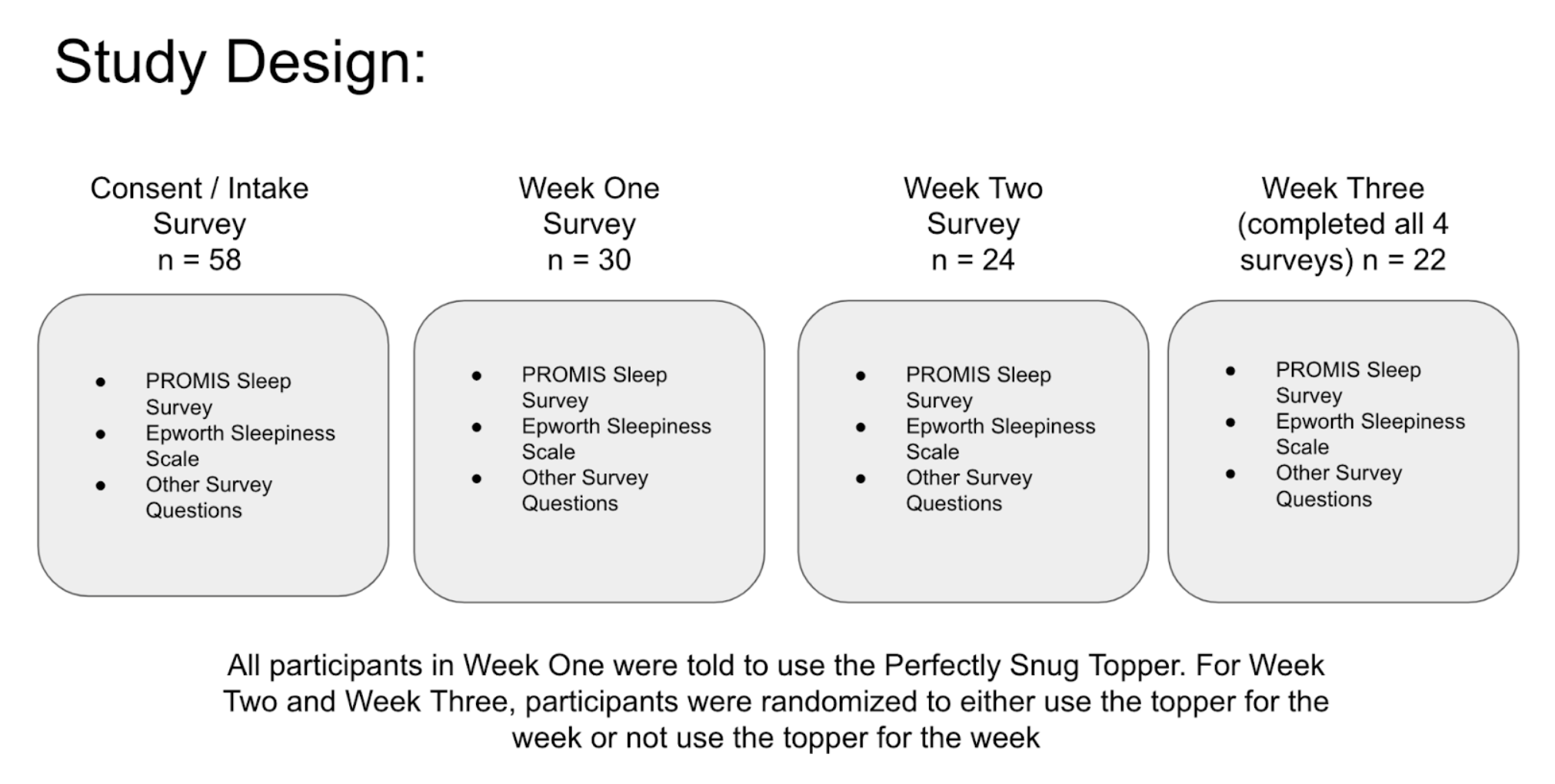
Figure 4. The assessments were given at onboarding and after each week of the three week study. The number of participants that completed the surveys at each time point are illustrated above.
Get $275 off when you enter the code provided in the email
Results
After participants tracked their sleep using the consensus sleep diary and/or the SleepSpace tracker and then completed weekly assessments using validated surveys, 80% of individuals felt that Perfectly Snug significantly helped them improve their sleep with the other 20% indicating that there was some improvement. Moreover, 85% of participants felt that the Perfectly Snug topper helped them stay asleep (see Figure 5). Note that two participants were not included in this survey assessment because it was not a mandatory question and they skipped over it. These are very promising results that indicate the efficacy of the topper and high user satisfaction with the product. This was further validated by a “world-class” net promoter score (NPS) score of >80% reported by participants (see Figure 6).
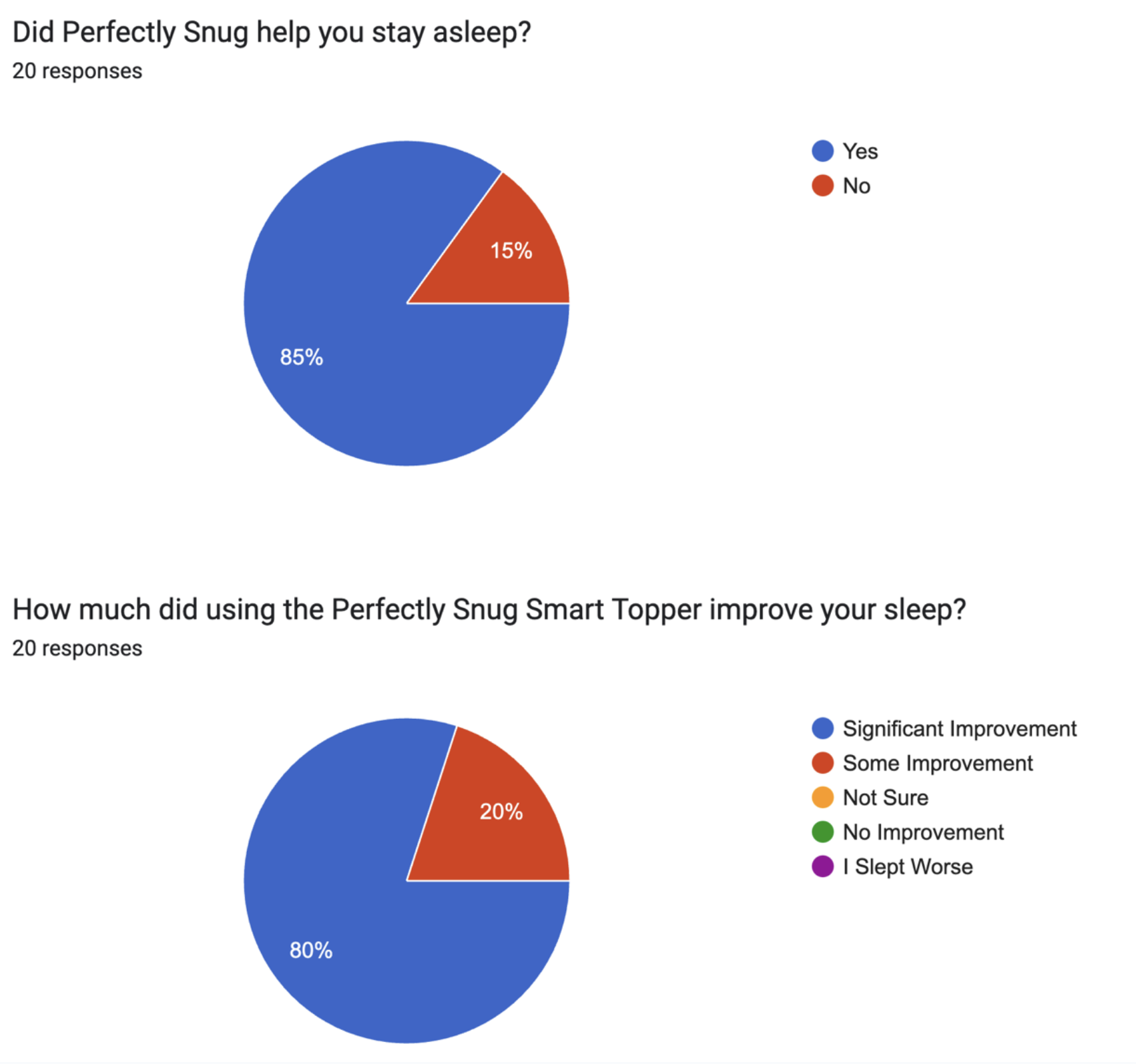
Figure 5: (top) Yes or no if Perfectly Snug helped with staying asleep and (bottom) Yes or no if Perfectly Snug helped improve sleep.
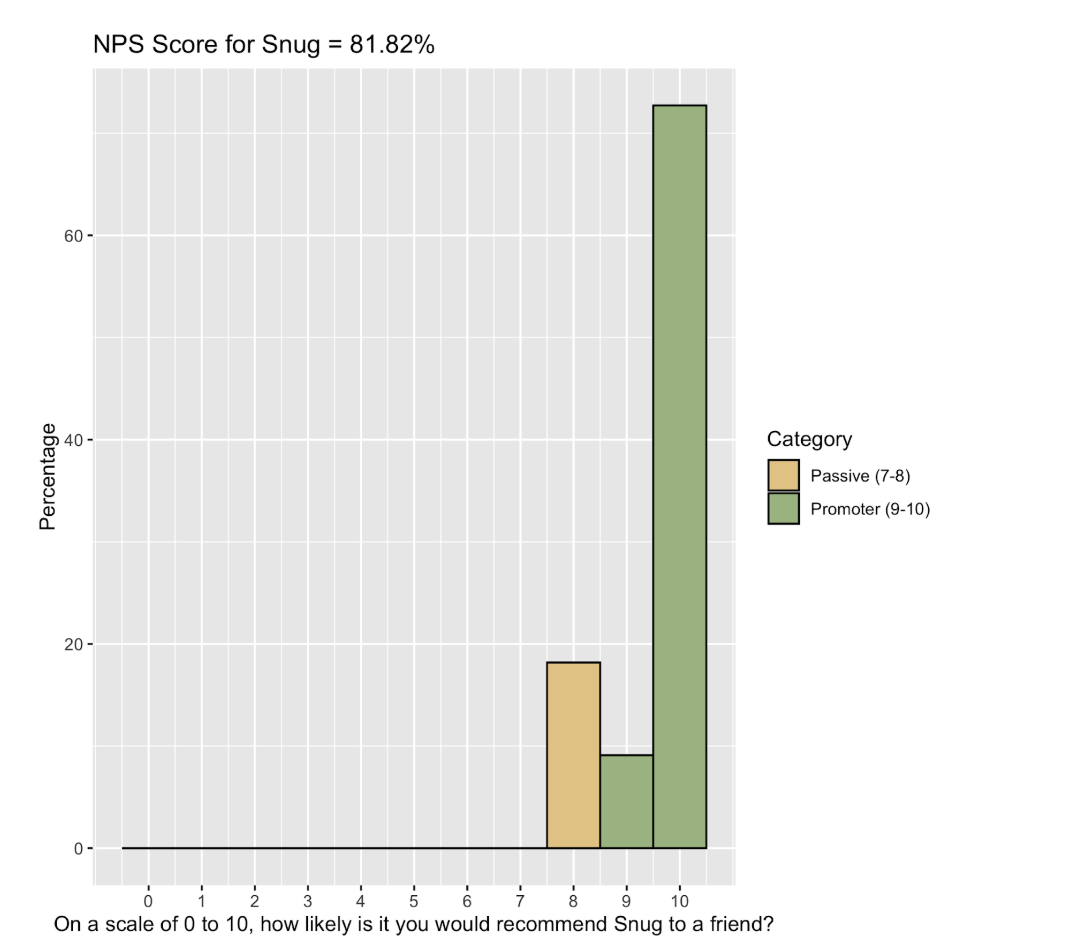
Figure 6: A "good" Net Promoter Score (NPS) is generally considered to be above 50. Scores above 50 are considered excellent, while scores of 70 or higher are deemed world-class. Users reported a “world-class” NPS score of 81.8% for the Snug topper.
Another important question was how quickly individuals felt that the topper impacted the restlessness/disruptions that can occur during sleep. A unique feature of the topper is that it dynamically adjusts the temperature to keep participants in a comfortable zone that they set prior to sleep and can customize. Results confirmed the hypothesis that the system reduced sleep disruptions, with more than 75% of individuals reporting that the topper made their sleep either more peaceful or very peaceful compared to when they did not use the topper (see Figure 4).
There was also evidence that the Snug topper improved the quality of sleep, both in terms of REM sleep, where dreams occur, and deep sleep. Both of these sleep stages are relatively more regenerative types of sleep, where a healthy individual will typically get about 2 hours of each throughout the night. In support of the Snug topper improving REM sleep, 75% of participants reported more dreams that had better quality or frequency (see Figure 7). Moreover, compared to when participants did not experience the topper, participants reported a 76.7% improvement in their perceived deep sleep see Figure 7). While a sleep tracker or polysomnography are needed to further confirm these findings, these promising results indicate that the topper can improve the quality of sleep.
Using a validated survey assessment of sleep quality called the Epworth Sleepiness Scale (ESS), the effectiveness of Perfectly Snug on next day alertness was further supported. The Epworth aggregates a score about alertness and attention based on 8 questions that are highly reliable at evaluating sleep next day energy.
Perhaps the most important finding validating the efficacy of Perfectly Snug is its impact on daytime alertness. The ESS asks participants how alert they felt in different situations after using the topper for a week or not using the topper for a week. Higher scores on the Epworth correspond to more daytime sleepiness. Participants reported being more alert during the day over the past week after using the topper (M = 4.64, SD = 3.82) compared to when they did not use the topper (M = 7.41, SD = 5.37), t(21) = -2.07, p = .05 (see Figure 6). A two point change on the ESS is considered clinically significant and a 2.77 change on the ESS was reported in this study (see Figure 8).
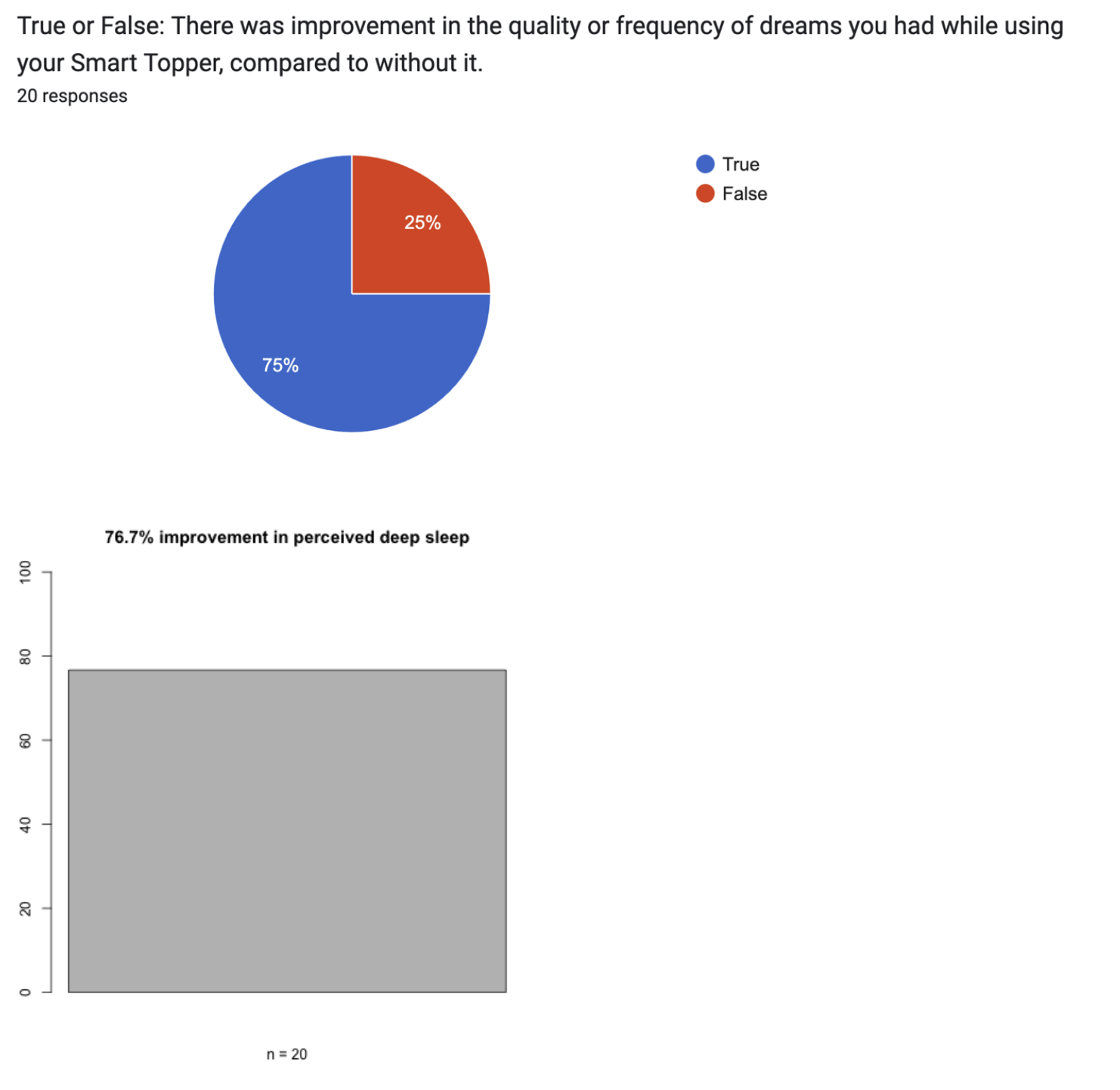
Figure 7. (top) Snug topper shows improvements in dreams and (bottom) Snug topper shows improvements in perceived sleep depth.
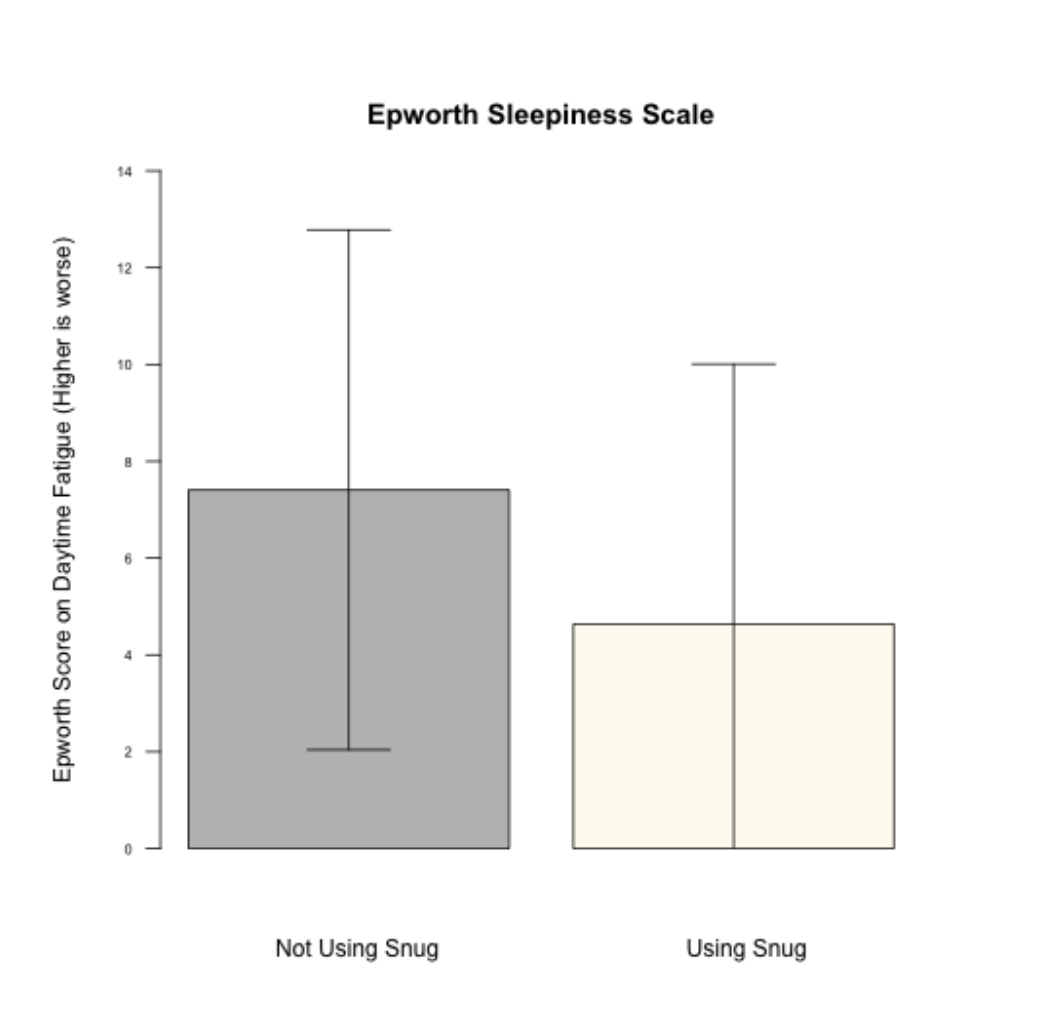
Figure 8. Daytime fatigue aggregate score based on the Epworth.
Conclusion
In a third party validation study of the Perfectly Snug topper, we found extremely high user satisfaction with the product. The product prevented sleep disruptions compared to when it was not used and improved both perceived sleep quality and daytime alertness. Sleep improved across various measures after using the topper compared to when participants were randomly assigned to not use the topper. There was also evidence of improvements in REM sleep and deep sleep, regenerative sleep stages that promote daytime alertness. These perceived improvements may explain the improvements on the validated Epworth Sleepiness Scale survey. The topper is a non-invasive, non-addictive, and simple to use solution that can improve sleep quality. Future research can focus how to improve the customization of temperature to further improve sleep quality, and possibly combining the topper with other validated techniques for sleep improvement, such as Cognitive Behavioral Therapy for Insomnia.
While this study showed promising results there were a few notable limitations that could improve studying temperature and sleep in the futures. The major limitation of this study was that participants were not blinded to when the topper was on or off. While it might be difficult to blind participants fully, by systematically turning the topper on or off, or using the topper at a setting that might not be considered effective, then blinding participants could address possible placebo effects. Another limitation was that objective measures of sleep quality from wearables or polysomnography were not collected. Ideally, to show efficacy, objective measures of sleep would correspond with the observed subjective improvements in sleep quality.
Interested in trying it yourself? There is a 30-day money-back guarantee! You can try the Perfectly Snug by clicking here and using SleepSpace to see if it works for you.
Get $275 off when you enter the code provided in the email
References
-
Kräuchi, K., & Wirz-Justice, A. (2001). Circadian rhythm of heat production, heart rate, and skin and core temperature under unmasking conditions in men. American Journal of Physiology-Regulatory, Integrative and Comparative Physiology, 280(2), R508–R518. https://doi.org/10.1152/ajpregu.2001.280.2.R508
-
Kräuchi, K., Cajochen, C., Werth, E., & Wirz-Justice, A. (1999). Warm feet promote the rapid onset of sleep. Nature, 401(6748), 36–37. https://doi.org/10.1038/43366
-
Raymann, R. J. E. M., Swaab, D. F., & Van Someren, E. J. W. (2007). Skin deep: Enhanced sleep depth by cutaneous temperature manipulation. Brain, 131(2), 500–513. https://doi.org/10.1093/brain/awm289
-
Harding, E. C., Franks, N. P., & Wisden, W. (2020). The temperature dependence of sleep. Frontiers in Neuroscience, 14, 566903. https://doi.org/10.3389/fnins.2020.566903
-
Van Someren, E. J. W. (2006). Mechanisms and functions of coupling between sleep and temperature rhythms. In M. H. Kryger, T. Roth, & W. C. Dement (Eds.), Progress in Brain Research (Vol. 153, pp. 309–324). Elsevier. https://doi.org/10.1016/S0079-6123(06)53017-2
-
Komagata, N., Latifi, B., Rusterholz, T., Bassetti, C. L. A., Adamantidis, A., & Schmidt, M. H. (2019). Dynamic REM sleep modulation by ambient temperature and the critical role of the melanin-concentrating hormone system. Current Biology, 29(12), 1976–1987.e4. https://doi.org/10.1016/j.cub.2019.05.009
-
Czeisler, C. A., Ronda, J. M., & Kronauer, R. E. (1979). Timing of REM sleep is coupled to the circadian rhythm of body temperature in man. Sleep, 2(3), 329–346. https://doi.org/10.1093/sleep/2.3.329
-
Carney, C. E., Buysse, D. J., Ancoli-Israel, S., Edinger, J. D., Krystal, A. D., Lichstein, K. L., & Morin, C. M. (2012). The consensus sleep diary: Standardizing prospective sleep self-monitoring. Sleep, 35(2), 287–302. https://doi.org/10.5665/sleep.1642
